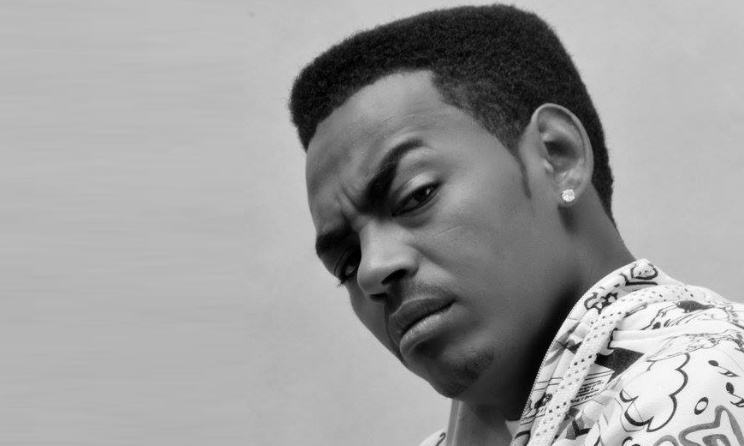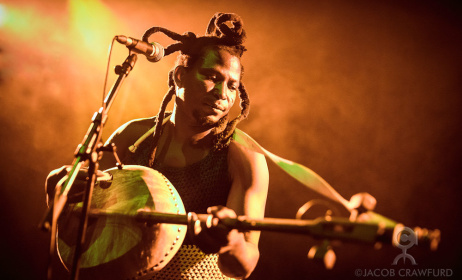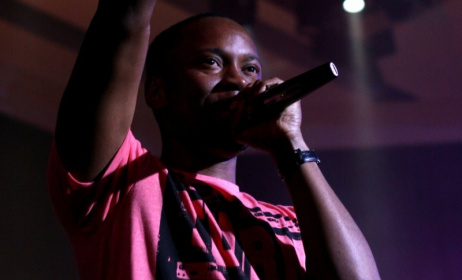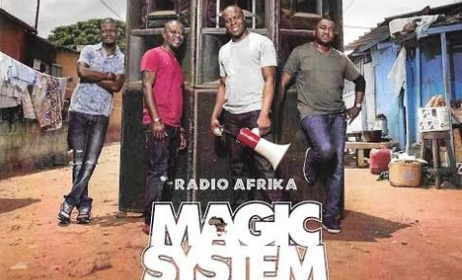The tale of Ethiopian hip hop – part 2
This is part 2 of the tale of Ethiopian hip hop. Read part 1 here.
Hahu Beatz, who hails from the northern Ethiopian city of Mekele, has been involved in hip hop for eight years. He says DMX, Nas and Busta Rhymes are among his earliest influences. Hahu Beatz, who holds a BA in business management from Hawassa University, began rapping in English but later switched to Amharic. He makes beats, films and also edits videos through his company Fidel Productions.
Hahu Beatz says young people in Ethiopia have no interest in the music Ethiopian MCs are producing. “The problem here in Ethiopia is that 90% of the teens in the cities listen to hip hop, but not ours,” he says. He adds that the overall quality of the lyrics and videos are to blame and notes that many of the artists imitate Western rappers instead of finding their own voice – his song ‘Shame’ addresses the issue. “Your performance should always be more than the audience expects,” he says. “You must have style and the look, only then can you bring the audience.”
Although hip hop culture is reflected in the fashion and music taste of young people throughout the country, it is especially vibrant in the southern cities and in the minority ethnic areas of South Omo near the border with Kenya.
Bujustar Gamo from Arba Minch combines traditional and contemporary beats with original lyrics to produce a unique flavour. Although he enjoys the music of Lil Wayne and Kanye West, among others, Bujustar says his major influence was Teddy Yo "through his style, pronunciation, clothing, hair and his beautiful lyrics”.
Buju has performed at clubs and hotels in Addis, Abra Minch University and a police conference. Many of his videos, including ‘LimataBesana’ (Work Hard), have been aired on the Ethiopian Broadcasting Service’s TV programmes. In his video ‘MetoMokoPoolo’, Buju and Hawassa artist Tokichaw address the issue of a person who is asking for help to solve the problem of inadequate food, clothing and money in the country.
Although Buju says there are no other established rappers from his area, several Arba Minch University students have demonstrated their talent. Yared, a civil engineering student who has also studied philology, was drawn into an appreciation of hip hop by the lyrics and style of T.I. “Because I was a fan, I copied (him) at first but now I focus on lyrics and wordplay that represent me and where I’m from," he says.
“People told me to rap in my own language so I could be popular but I always rap in English. I’m not trying to be popular – I just want to do what I want,” Yared says. Yared has performed at his university but says: “It’s a risk. It’s a different culture here. Right now I’m just trying to please my parents.” Nonetheless, he continues to find and follow American artists such as YG, K-Camp and Young Jeezy on YouTube. “That’s the way I approach it."
The lakeside city of Hawassa has given rise to a host of talented teens who rap in English and write lyrics that authentically represent their lives and everyday issues. The most noteworthy include Ethio Joe, Christian rap crew R4C and a powerhouse female artist TG.
Ethio Joe, whose mobile phone features a YG ringtone, explains that as a youngster he was violent but hip hop changed that. “I feel like I’m explaining my feelings to the paper, I get solutions and then I can let go. Hip hop is the only place I feel free,” he says. His lyrics take a sharp look at poverty, materialism and the people he knows. “I write what comes out of my heart, which can help people understand their own feelings too.” Joe is now a second year economics student at Addis Ababa University. “You can make hella money out of hip hop if you know economics,” Ethio Joe says.
R4C group leader and Christian rapper Sammy says: “Hip hop is a universal culture that can be used to eradicate poverty and other negative things. The new generation is all into hip hop culture, so they need somebody to show them how they should live.” Influenced by American gospel rapper Lecrae, Sammy began writing his own lyrics when he was 15, first in Amharic then in English. He and group members Ba-Rock, Dave and Truth Kid have performed at their church, in schools and – like Ethio Joe and a few other Hawassa artists – at two concerts with Teddy Yo.
Sammy says he and R4C have recorded singles and are currently working on an album. Dave notes that “hip hop speaks to your soul. It’s the best genre to express yourself."
“There are a lot of new rappers coming up in the high schools,” Sammy says. Ethiopian hip hop will continue to grow and allow the youth of the country to tell their own stories."
TG is a deviation from the standard – she is a young woman in a male-dominated field. Now a mechanical engineering student in Addis, she was planning to record three demos during her summer break. Her music speaks about family, love and hate as well as “anything else that strikes an emotional chord, such as what life is like for a woman”. In addition to recording, she wants to mentor other young women and encourage them to speak out.
In the Hamer, an indigenous area near Kenya, the first rapper has emerged. Dressed in clothing that would allow him to blend in with the youth anywhere, Wadu traces his involvement in hip hop to the music of 50 Cent. He says people who sing about Hamer are not true. "I wanted to tell what is real and true,” he says. So far, Wadu has performed in his village at the Evangadi, a traditional Hamer dance event. He writes his own lyrics but says he is in need of beats.
In the southern city of Jinka, the dance group Tenate (Patience) stages regular competitions with other crews. Formed two years ago, Tenate consists of five male and three female dancers. “We are from poor families where our mothers have left us,” 16-year-old dancer Tamerayhu Adyea says . “Dance is our life and we want to take it to the street.”
The question most commonly asked by mystified elders is: “What is the purpose of this?” Tamerayhu best answers this when she says: “Hip hop opens the doors and windows; we want people to see our hearts.”
This article first appeared on Addis Insight(link is external).






























Commentaires
s'identifier or register to post comments